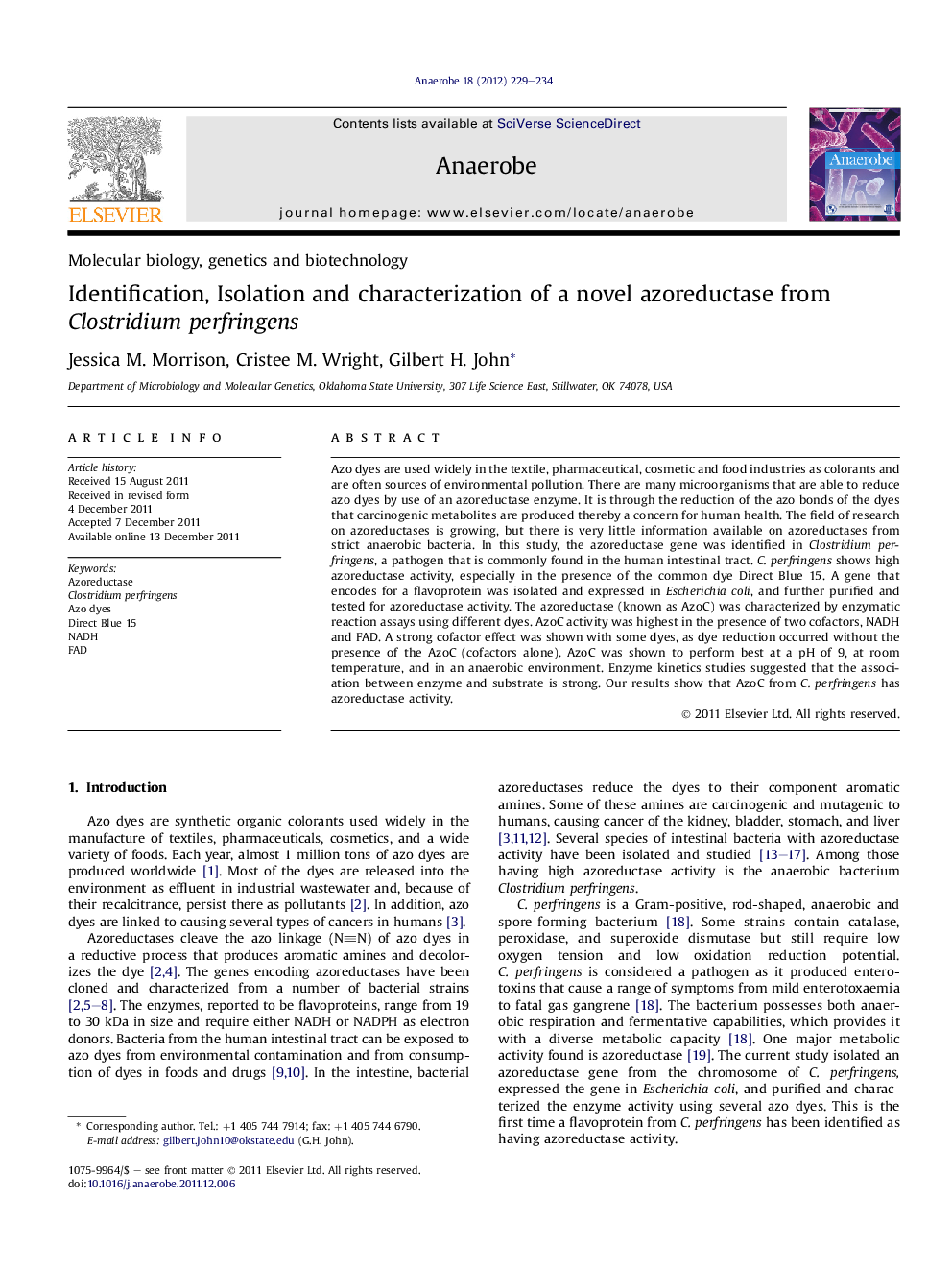| کد مقاله | کد نشریه | سال انتشار | مقاله انگلیسی | نسخه تمام متن |
|---|---|---|---|---|
| 3395511 | 1221689 | 2012 | 6 صفحه PDF | دانلود رایگان |

Azo dyes are used widely in the textile, pharmaceutical, cosmetic and food industries as colorants and are often sources of environmental pollution. There are many microorganisms that are able to reduce azo dyes by use of an azoreductase enzyme. It is through the reduction of the azo bonds of the dyes that carcinogenic metabolites are produced thereby a concern for human health. The field of research on azoreductases is growing, but there is very little information available on azoreductases from strict anaerobic bacteria. In this study, the azoreductase gene was identified in Clostridium perfringens, a pathogen that is commonly found in the human intestinal tract. C. perfringens shows high azoreductase activity, especially in the presence of the common dye Direct Blue 15. A gene that encodes for a flavoprotein was isolated and expressed in Escherichia coli, and further purified and tested for azoreductase activity. The azoreductase (known as AzoC) was characterized by enzymatic reaction assays using different dyes. AzoC activity was highest in the presence of two cofactors, NADH and FAD. A strong cofactor effect was shown with some dyes, as dye reduction occurred without the presence of the AzoC (cofactors alone). AzoC was shown to perform best at a pH of 9, at room temperature, and in an anaerobic environment. Enzyme kinetics studies suggested that the association between enzyme and substrate is strong. Our results show that AzoC from C. perfringens has azoreductase activity.
Journal: Anaerobe - Volume 18, Issue 2, April 2012, Pages 229–234